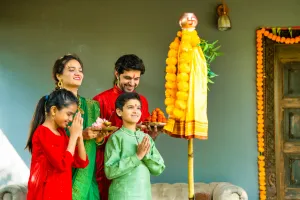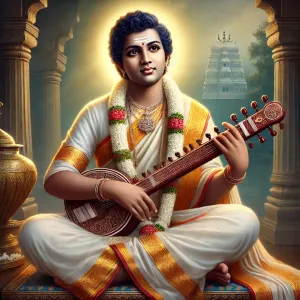Makar Sankranti, one of the most auspicious festivals in India, is celebrated with immense enthusiasm across the country. Marking the transition of the Sun into the zodiac sign of Capricorn (Makar), this festival has both astronomical and spiritual significance. Its timeless appeal transcends religious boundaries, making it a day of universal joy and renewal.
Astronomical and Seasonal Importance
Makar Sankranti signifies the end of the winter solstice and the beginning of longer days as the Sun moves northward. This transition, called Uttarayana, symbolizes positivity, growth, and a new beginning. In the agrarian society of India, it is a time to celebrate the harvest and express gratitude to nature for its abundance.
The festival usually falls on January 14th or 15th, depending on the Sun's movement. Unlike other Indian festivals based on the lunar calendar, Makar Sankranti follows the solar calendar, ensuring its date remains consistent every year.
Rituals and Traditions
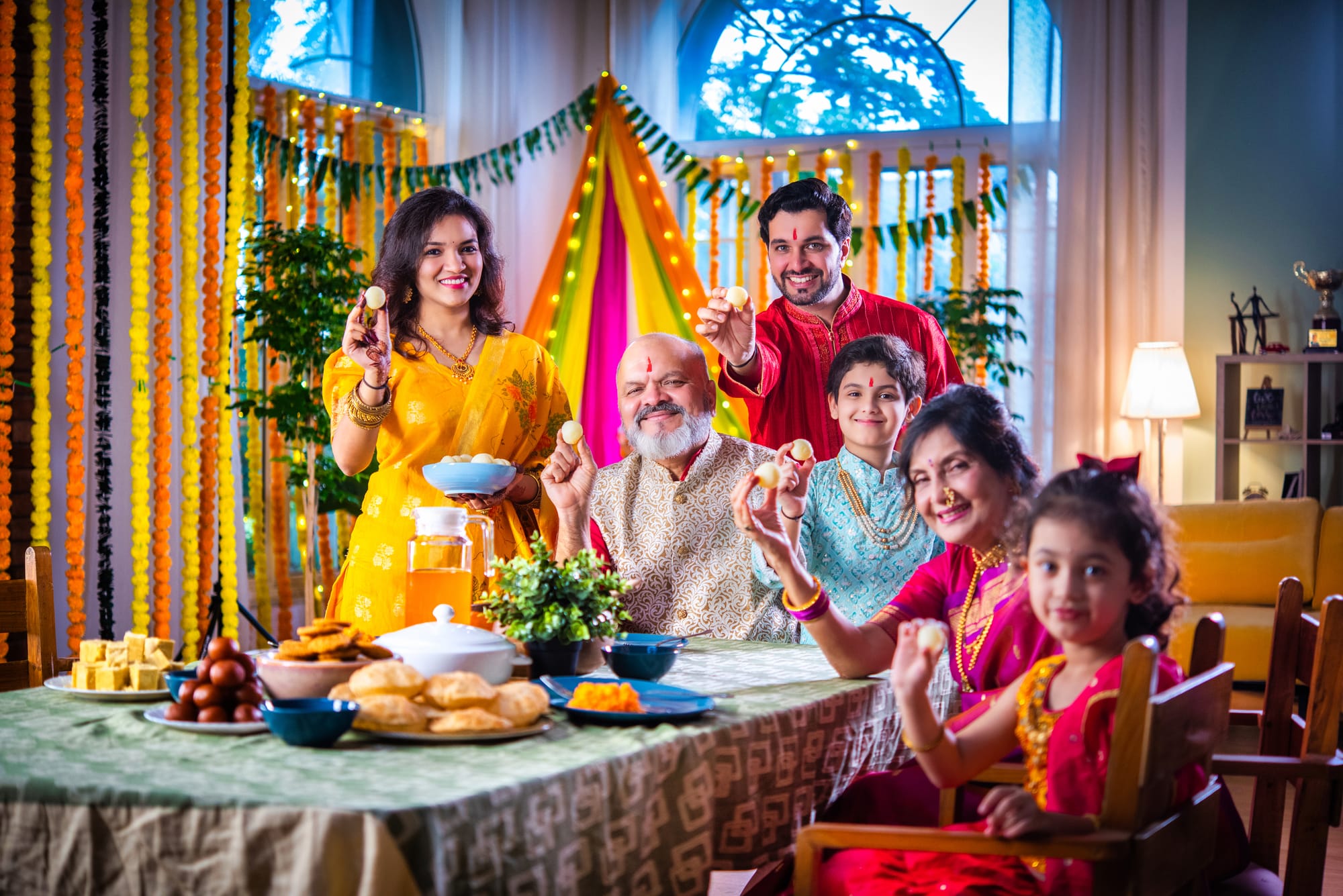
Each region of India celebrates Makar Sankranti with unique customs and names, adding to the vibrancy of the festival:
- In North India, people fly kites to mark the occasion, symbolizing their aspirations reaching new heights.
- In Gujarat and Maharashtra, sweet delicacies like tilgul (sesame and jaggery) are shared, signifying harmony and goodwill.
- In Tamil Nadu, it is celebrated as Pongal, a multi-day festival of thanksgiving to nature.
- In Karnataka and Andhra Pradesh, farmers pay homage to their cattle for their role in agriculture.
- In West Bengal, it coincides with the Ganga Sagar Mela, where devotees take a holy dip at the confluence of the Ganges and the Bay of Bengal.
Spiritual Significance
Makar Sankranti is deeply rooted in Indian spirituality. It symbolizes the victory of light over darkness and wisdom over ignorance. The Sun, revered as a deity in Indian culture, is believed to remove obstacles and bring prosperity. The festival marks an ideal time for self-reflection, spiritual growth, and reconnecting with the divine.
The six months of Uttarayana is considered especially auspicious in Hinduism. It is said that souls leaving their earthly existence during this time attain liberation (moksha). The epic Mahabharata also mentions Bhishma Pitamah choosing to leave his mortal body during Uttarayana to ensure his spiritual ascension.
Universal Lessons from Makar Sankranti
While deeply rooted in Indian traditions, Makar Sankranti carries universal lessons:
- Gratitude: It reminds us to thank the forces of nature and those who contribute to our well-being.
- Renewal: Like the Sun's journey northward, it inspires us to move towards positivity and growth.
- Unity in Diversity: The festival's varied regional celebrations underscore the importance of embracing diversity.
Sankranti festival stands out among Indian celebrations because it follows the solar calendar and occurs on the same date each year.
Unlike most Indian festivals with shifting dates, Makar Sankranti holds a fixed spot on the calendar, marking the sun's entry into Capricorn. In 2025, families eagerly anticipate this joyous harvest festival, celebrating its auspiciousness with loved ones.
Capturing the authentic essence of Sankranti is simple and meaningful. From morning rituals and festive cooking to kite flying and community bonding, each tradition adds a special touch to the celebration.
This guide will help you embrace every aspect of Makar Sankranti while honoring its timeless traditions. The magic of this festival is yours to experience—let's explore how to celebrate it beautifully!
Preparing Your Home for Sankranti
Your Sankranti preparations should start with making your home a welcoming space for this auspicious festival. This piece will help you create the perfect festive atmosphere.
Essential cleaning and decluttering tips
Bhogi marks the beginning of the festival - a day that calls for a complete house cleaning. The kitchen deserves your first attention since it plays a central role in the festivities. Give your gas stoves, slabs, and cupboards a good clean. Your living spaces need attention, too - focus on furniture, bookshelves, and wardrobes. Fresh bed linens, curtains, and door mats will add new life to your home.
Setting up the prayer area
This solar festival demands special care for your prayer area. After cleaning the space, a mixture of water and tulsi leaves should be sprinkled. The Sun God's image needs to face east as tradition considers it auspicious. Your prayer setup should include:
· Fresh flowers and fruits
· Copper or brass vessels
· Jaggery and sesame seeds
· Traditional oil lamps (diyas)
Creating festive decorations
Traditional decorations will bring joy and positivity to your space. Fresh mango leaves at your home's entrance symbolize happiness and good fortune. Your doorstep should feature vibrant rangoli patterns made with colored powders and flowers. Traditional earthen lamps and string lights around your home create a warm, welcoming atmosphere. Sugarcane stalks should be part of your decorations - they're a key element of the Sankranti festival.
Morning Rituals and Traditions
The auspicious Sankranti morning starts during Brahma Muhurta, those special moments before sunrise that shape this sacred day. Here's a guide to the most important morning traditions that make our Sankranti festival celebration meaningful.
Early morning bath and prayers
A purifying bath before sunrise marks the beginning of our day. Adding a few drops of Ganga water or Tulsi leaves to bath water brings spiritual power to those who follow traditional practices. The ritual continues as we meditate on the Sun God and chant "Surya Namostu" 21 times.
Traditional outfit selection
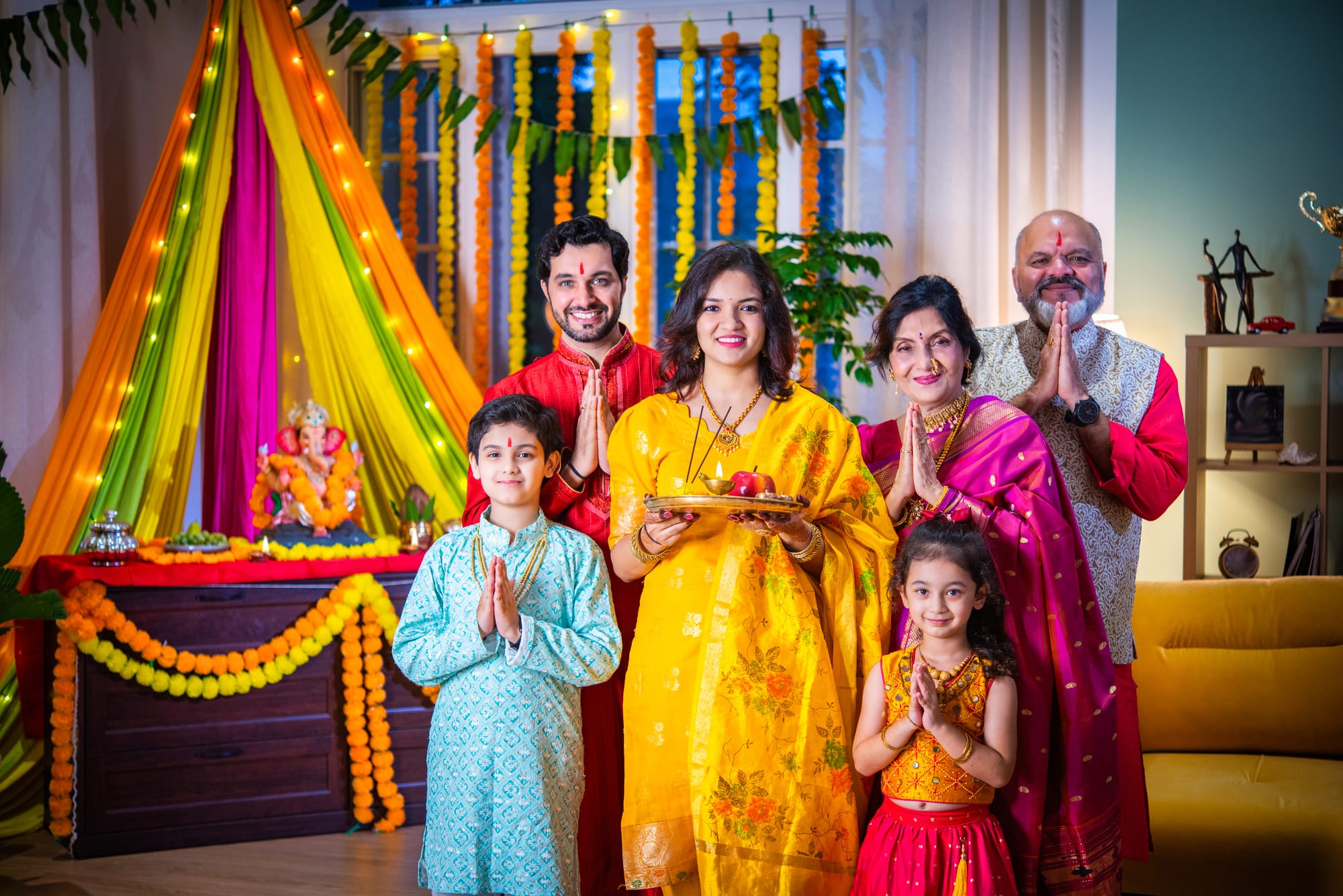
Your Sankranti festival attire should reflect colors with deep spiritual meaning. Traditional wisdom guides us to wear:
· Red or Yellow clothing - these colors bring good fortune
· Orange or Saffron shades that symbolize spiritual energy
· Pink outfits that attract prosperity's blessings
Performing the Surya Namaskar

The sun's rise signals time for the most important ritual - the Surya Namaskar. These twelve yoga poses are more than exercise. They express our gratitude to the Sun God. People who keep taking them see many benefits:
· Better physical vitality and immunity
· Mental balance
· Better flexibility and posture
· A healthy heart
Face east as you perform this sacred sequence. The gentle morning sunlight will boost your practice. Comfortable clothes that allow free movement while staying modest work best for these poses.
Cooking Traditional Sankranti Dishes
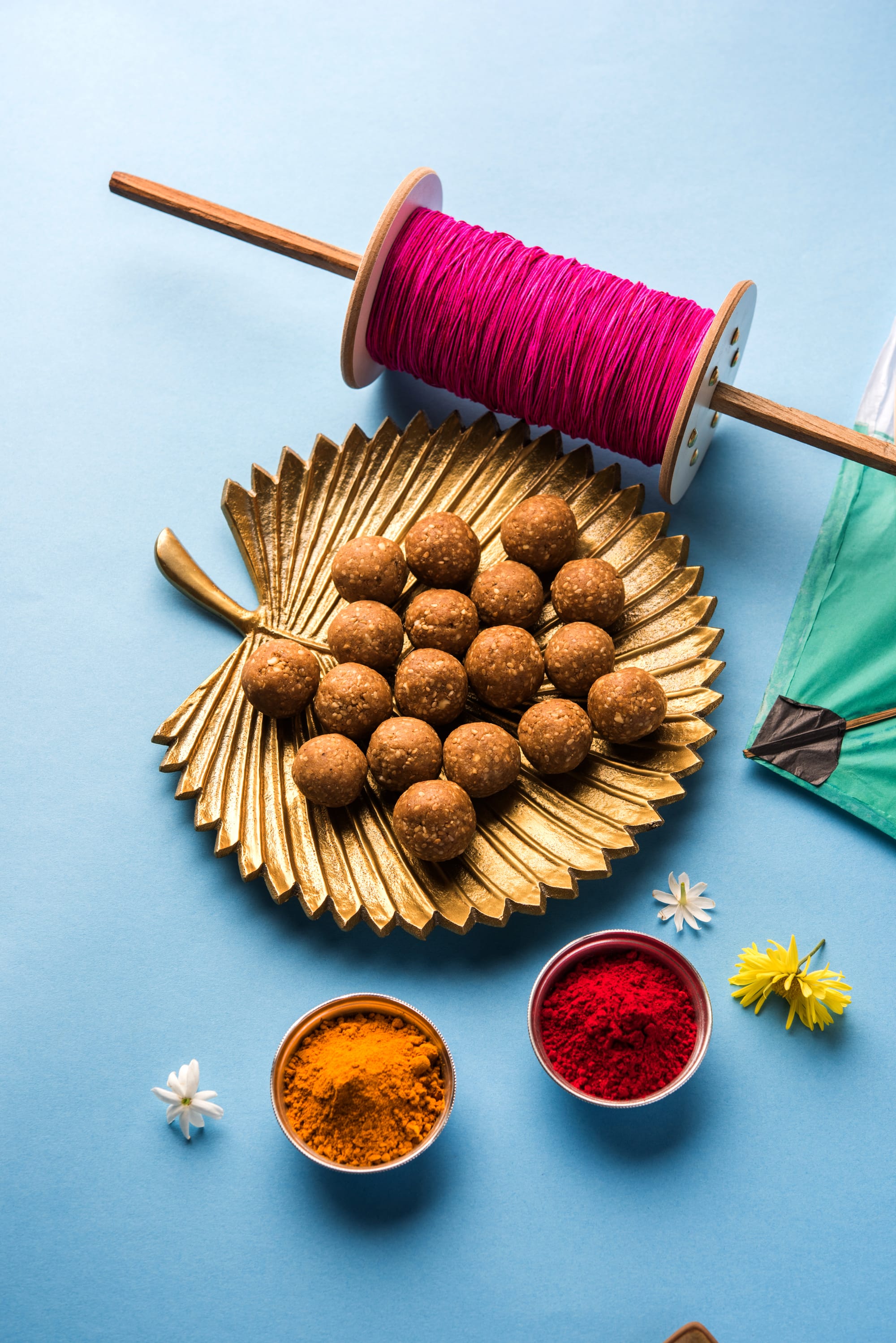
The kitchen beckons us after our morning rituals. Traditional delicacies make our Sankranti festival special; their aroma fills our home with festive warmth.
Essential ingredients preparation
Our cooking begins with these fundamental ingredients:
· Fresh sesame seeds (til)
· Pure jaggery (gur)
· Cardamom powder
· Ghee
· Rice and moong dal
· Fresh coconut
Step-by-step Til Ladoo recipe
The most auspicious Sankranti sweet is til ladoo. Here's our tried and tested method:
1. Dry roast sesame seeds on medium-low heat until they turn golden and release their aroma
2. Heat ghee in a pan and add grated jaggery with 2 tablespoons of water
3. Cook the jaggery until it reaches softball consistency
4. Mix in the roasted sesame seeds and cardamom powder
5. Shape into small rounds while the mixture is still warm
Regional specialty dishes
Our Sankranti festival celebration shines through these regional delicacies:
North India: Gur ka halwa emerges from a blend of semolina, ghee, and saffron-infused jaggery syrup
Bengal: Patishapta brings delicate crepes filled with coconut and khoya stuffing. The stuffing combines grated coconut, khoya, and powdered jaggery.
South India: Sweet Pongal graces our tables, cooked with rice, moong dal, and milk, then garnished with cashews and dry fruits
Maharashtra: Til-gud poli adds variety with its special flatbread stuffed with sesame-jaggery mixture
When prepared with pure ingredients and positive energy, these dishes represent more than just food—they embody our Sankranti festival's traditions.
Afternoon Activities and Celebrations
The afternoon sun lights up our Sankranti festival celebrations as we prepare for the most exciting part of our day - outdoor activities that unite families and communities.
Kite flying basics for beginners
New kite flyers need to learn simple safety techniques. A perfect location would be an open space away from power lines and trees. Here's how you can make your kite flying a success:
6. Select a triangle-shaped kite for best results
7. Hold the thread in one hand and kite in the other
8. Let the wind lift the kite gently
9. Pull the string periodically to maintain height
10. Adjust to changing wind directions
Safety First: Cotton string works better than glass-coated manja, which keeps our celebration safe for everyone.
Family games and activities
Traditional games make our Sankranti festival come alive. These activities bring joy to everyone:
· "Flowers With Peanuts" - where we create flower patterns using peanuts and coins
· "Marigold Flower Garden" - a creative game using flowers and thermocol sheets
· "Kite Tambola" - our unique twist on the classic game with kite-shaped tickets
Community sharing traditions
Our Sankranti festival's true spirit shines through community sharing. Many regions host large gatherings where families share traditional meals together. When distributed, special til-gud (sesame-jaggery) treats symbolize sweetness and unity.
For Makar Sankranti 2025, we plan to boost our community celebrations with cultural shows and traditional music. Some communities organize rangoli competitions and cultural performances that make the afternoon memorable.
These precious moments deserve documentation - they're more than celebrations; they're treasured memories we create together. Flying kites from rooftops or sharing sweets with neighbors strengthens our bonds and keeps our traditions alive.
Conclusion
Makarsankranti exemplifies our rich cultural heritage, seamlessly combining spiritual devotion with community festivities. Our meticulous home preparations, morning rituals, traditional cooking, and afternoon activities create memories and strengthen family bonds.
The Sankranti festival's spirit shines brightest when celebrated together. Several temples organize community gatherings, and the Radha Krishna Temple's Makarsankranti event page offers opportunities to join their dynamic celebrations and connect with fellow devotees. https://www.radhakrishnatemple.net/jagadguruttam-diwas-celebration
Note that each aspect of our celebration holds deep significance - from sharing til-gud to flying kites in the afternoon sky. These age-old traditions help us welcome positive energy and express gratitude for nature's abundance.
Our cherished customs deserve celebration, and Makarsankranti 2025 promises to bring warmth, joy, and spiritual growth to homes and communities alike.
FAQs
Q1. What are the essential steps to prepare your home for Sankranti?
Begin by thoroughly cleaning the house, focusing on the kitchen and living spaces. Set up a prayer area facing east with the Sun God's image, fresh flowers, and traditional items. Decorate your home with mango leaves, rangoli patterns, and earthen lamps to create a festive atmosphere.
Q2. What are some traditional morning rituals for Sankranti?
Start with an early morning bath, ideally before sunrise. Wear auspicious colors like red, yellow, or orange. Perform the Surya Namaskar, a sequence of twelve yoga poses, while facing east to express gratitude to the Sun God.
Q3. Which traditional dishes are commonly prepared during Sankranti?
Til ladoo, made from sesame seeds and jaggery, is a popular sweet. Other regional specialties include gur ka halwa in North India, patishapta in Bengal, Sweet Pongal in South India, and til-gud poli in Maharashtra.
Q4. What outdoor activities are popular during Sankranti celebrations?
Kite flying is a beloved tradition during Sankranti. Families also engage in games like "Flowers With Peanuts" and "Kite Tambola." Many communities organize gatherings to share traditional meals, sweets, and cultural shows and performances.
Q5. How can one incorporate community sharing into Sankranti celebrations?
Organize or participate in large gatherings where families share traditional meals. Prepare and distribute til-gud (sesame-jaggery) treats to symbolize sweetness and unity. Consider joining local temple events or community cultural shows to connect with fellow celebrants and keep traditions alive.


